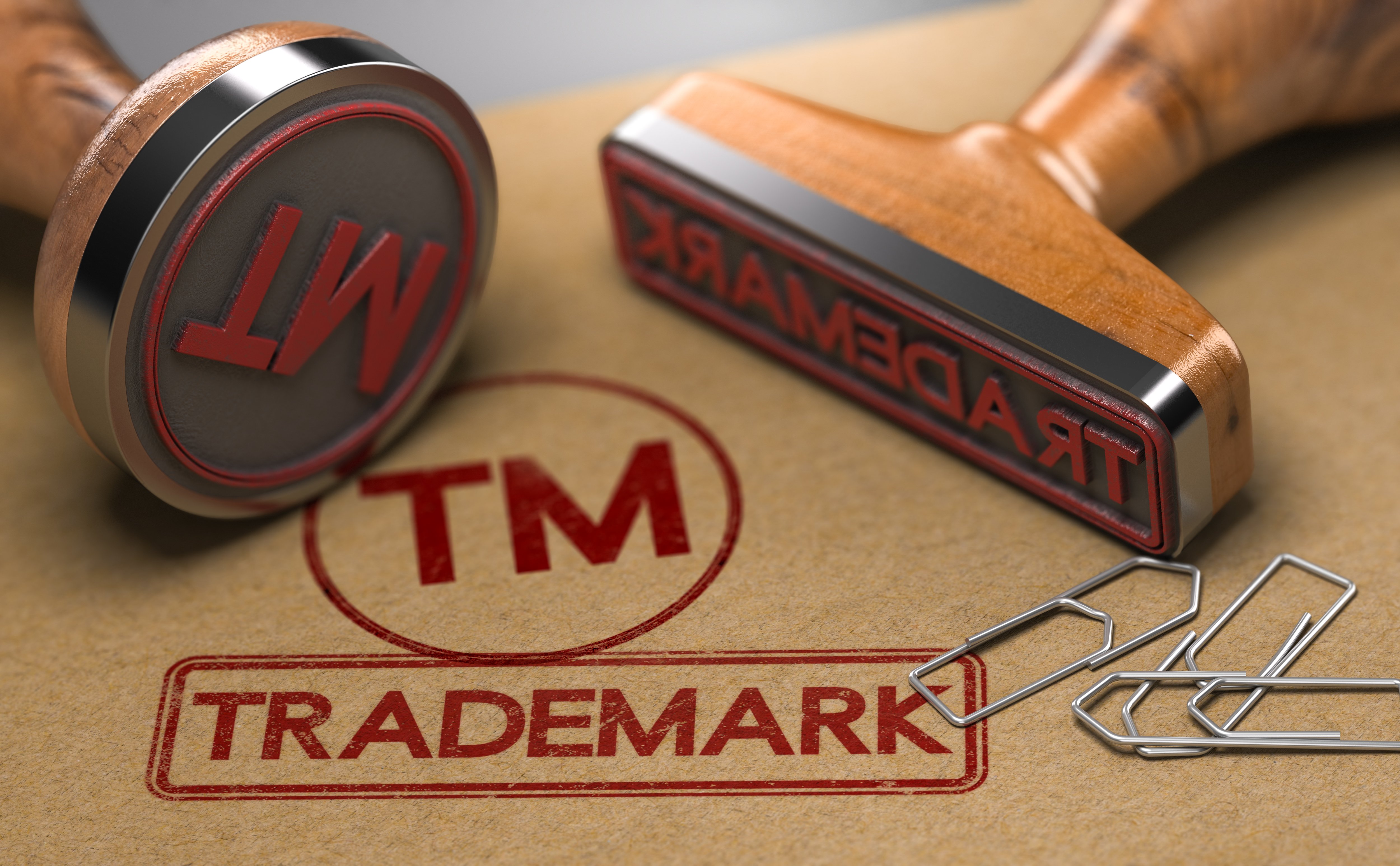Trademark Attorneys
Protecting Your Registered Trademarks and Defending Your Mark Against Infringement
Trademark Infringement on the Rise
Does your business have exclusive rights to your trademark?
One study revealed that 80 percent of C-level executives report rising trademark infringement (TMI). The study also revealed general trademark law-related litigation, with more than half of the executives indicating their organization initiated legal action against third parties who had infringed on their brand.
The number of trademark rights claims being filed is expected to increase. However, trademark protection is not automatic, and steps must be taken to protect your business and avoid consumer confusion.

What Are Trademark Attorneys?
Trademark attorneys are experts in trademark law, providing guidance and counsel to businesses on protecting and defending their service marks, helping them select new marks, and securing official trademark registration.
Trademark attorneys advise on choosing and registering trademarks and can help resolve trademark disputes. Additionally, they keep track of trademark registration deadlines and renewals. They also defend clients against infringement and intellectual property challenges.

Seasoned Trademark Lawyers at Whitcomb Selinsky, PC Can Help
Trademark law is a unique area of law that requires particular knowledge, including understanding The Trademark Manual of Examining Procedure. The legal counsel at Whitcomb Selinsky, PC, has subject matter expertise in copyright law, trademark searches, and certification marks. Our attorneys know how to ask the right questions to eliminate the likelihood of confusion about trademark ownership to prevent small mistakes from eventually turning into more significant errors.
From start to finish, our firm will partner with you to mitigate risks related to trademark dilution. They offer complete transparency to U.S. trademark law and are dedicated to ensuring that your trademark case resolves positively.

Common Trademark Law FAQs
-
What is considered trademark infringement?
Trademark infringement occurs when someone else uses a trademark that is identical or similar enough to an existing trademark that it’s likely to cause confusion among consumers and/or to dilute the value of the original trademark.
Courts consider the following elements of proof when determining if trademark infringement has occurred:
- The actual amount of confusion that has occurred between the marks.
- The alleged infringer’s reasons for infringing on the mark.
- The prior owner’s potential expansion into the domain of the other.
- The proximity of the products or companies that use the mark.
- The quality of the alleged infringer’s product.
- The similarity of uses between the two trademarks.
- The sophistication of consumers who might be confused by the mark.
- The strength of the mark that has been infringed.
-
Is trademark law federal?
Trademarks are governed by both state and federal law. In the United States, federal trademarks are registered with the United States Patent and Trademark Office (USPTO) and are protected nationwide by federal law.
Trademarks registered by state agencies are only protected in the state in which they were registered.
-
Who enforces trademark laws?
A trademark owner who believes someone else is infringing on their trademark can file a lawsuit against them. Federal courts hear the case if it is a federally-registered trademark, while a state court would hear the case if it involves a state-registered trademark.
-
What is an example of a trademark violation?
Some examples of trademark violation or trademark infringement include:
- Another company using a similar mark (such as a similar logo, name, or other identifying design) causes consumers to confuse that company with the company that owns the original trademark.
- Someone else using the actual registered trademark without permission from the trademark owner.
- A company producing and selling counterfeit goods.
- Someone registering a domain name that is similar to an existing, registered trademark.
- Cybersquatting, or registering a domain name that is identical or similar to an existing trademark.
- Someone using an existing trademark on social media (in posts, hashtags, or advertisements) without permission.
-
What is the Lanham Act?The Lanham Act is the primary federal statute for trademark law in the United States. It provides for the system of trademark registration and protection against the unauthorized use of similar marks. It was enacted by Congress in 1946
-
What does trademark law protect against?Federal trademark law (as defined in 15 U.S.C Chapter 22: Trademarks) protects you against someone else using your trademark or something similar for related goods and services without your permission. It protects against consumers being confused by these other goods and services, which could dilute your brand and/or harm your reputation.
-
How long does a trademark last?
Federal trademark registration requires that you are actively using the trademark in commerce. You must file maintenance documents at regular intervals to prove your continued use of the mark and avoid cancellation of your trademark for non-use.
While there are some exceptions, these maintenance documents are filed:
- Between the fifth and sixth years after the original registration date
- Between the ninth and tenth years after the original registration date
- Every 10 years after that
-
What is an unregistered trademark?
An unregistered trademark, or state common law mark, is essentially the same thing as a registered trademark in that it is a word, slogan, symbol, design, or combination of these that identifies the source of your goods and services and distinguishes them from the goods and services of others.
However, without federal registration, there is no legal presumption of ownership. This limits protection to your immediate geographic area and takes away most recourse available against unauthorized use of the trademark.
Click here to read more about Registered vs Unregistered Trademarks: Why Registration Matters.
-
What does Intellectual Property include?
According to the International Trade Administration, intellectual property refers to creations of the mind, including:
- Inventions
- Literary and artistic works
- Symbols, images, names, and logos used in commerce
Your intellectual property is what gives you a competitive advantage. As such, it is a valuable asset that should be protected.
-
Who owns intellectual property by law?The person or company that first created the invention, design, or creative work is usually the owner of that intellectual property. However, ownership also can be assigned by contract or other legal agreement.
-
What determines intellectual property rights?Some of the factors that determine your legal rights when it comes to intellectual property include what type of intellectual property it is, how it is used, where it is used, and whether or not it has been registered to establish legal ownership and protections.
-
When do I need a Trademark?
Whether you’re thinking about starting a business, are new to the business, or have operated a business for some time, if you’re wondering, “When do I need a trademark?” the answer is probably right now!
It is recommended that a company register its trademark as soon as possible, ideally before it begins using the mark in commerce.
This is because trademark registration provides legal protection and establishes ownership, which is important in preventing others from infringing on the mark.
-
Why would I need a trademark?
You may need and benefit from a registered trademark for a variety of reasons. Here are some examples:
- Protecting your brand and reputation
- Enhancing brand recognition
- Establishing ownership
- Licensing and franchising
- International protection
-
What happens if you don't trademark?
If you don’t register a trademark, you’ll have limited protection when it comes to the fair use of your mark as well as limited recourse in the event of unfair competition.
If you don’t officially trademark, you’re relying on good faith, as an unregistered mark can only be enforced within the immediate geographic area where it is used in commerce under what is known as state common law.
-
Do I need a trademark lawyer?
Trademark law is an essential, but often complex, component of business law, which is why there are so many benefits of having a trademark lawyer on your side.
If you live in the United States, you are not required to have a trademark lawyer represent you before the U.S. Patent and Trademark Office. However, if you live outside the U.S., you do have to have a U.S.-licensed attorney represent you.
Even if you’re not required to have one, it can be a good idea to hire a trademark lawyer because they can provide a wide range of services in the area of trademark law. These trademark services include:
- Conducting trademark searches
- Registering trademarks
- Enforcing trademark rights against infringement
- Monitoring for potential trademark infringement
- Assisting in licensing trademarks and franchising
-
What are the elements of trademark infringement?
To demonstrate trademark confusion has occurred under the appropriate federal law, courts analyze the existence of eight factors. An individual or business alleging trademark infringement need not prove all of the following eight elements, but these factors will prove influential:
- The actual amount of confusion that has occurred between the marks
- Alleged infringer’s reasons for infringing on the mark
- Prior owner’s potential expansion into the domain of the other
- Proximity of the products or companies that use the mark
- Quality of the alleged infringer’s product
- Similarity of uses between the two trademarks
- Sophisticated consumers who might be confused by the mark
- Strength of the mark that has been infringed
-
What steps should I take to avoid an infringement accusation?
To avoid costly litigation, trademark holders should remember to follow some critical advice in registering a mark. This advice includes the following:
Perform research: Many states offer tools for individuals to perform searches of business names. When searching for similar business names, individuals should never forget to search for similarly sounding and similarly spelled business names and use any synonyms. If you plan on doing business in other states, it is also a good idea to perform a similar search in those states.
Stay away from misleading trademarks: Infringement actions are often only successful if a trademark is found to be intentionally misleading. As a result, trademark holders should analyze the intention behind selecting a verbal mark.
When in doubt, consult with an attorney: Many individuals and companies benefit from talking to an experienced attorney before deciding on a trademark. A skilled trademark or intellectual property attorney can help an individual select a “safe” trademark and introduce ideas to safeguard the mark from potential infringement.
-
What is the advantage of an ITU application?
Often, once clients learn about the limited purpose of intent-to-use (ITU) applications, they ask what the benefits of these applications are for them. One advantage is these applications allow the Trademark Office to review an application before the applicant has invested significant money in packaging, marketing, and other items involved with the mark.
Also, individuals who file ITU applications are not required to provide evidence of using the mark in the commerce part of the application. If the U.S. Patent and Trademark Office does grant an ITU application, an individual has up to 30 months to use the mark in commerce.
Another advantage is the filing dates will serve as the date of an individual’s first use of the trademark, provided the individual later uses the trademark and follows other applicable federal regulations. Having this early filing date considered the mark's first use can prove highly advantageous if conflicts arise with other rival trademarks.
-
What are the risks of intent-to-use applications?
Trademark owners who apply for intent-to-use (ITU) applications risk losing trademark rights if the identification of goods and services with ITUs is broader than the actual intended use of the trademark.
Trademark applications can be filed under several types. Still, the two most common filing bases have a bona fide intent to use a trademark and the actual use of a mark in interstate commerce.
ITUs must be filed by a party entitled to use the mark in commerce on the application filing date. The application must include a verified statement the applicant has a bona fide intention to use the mark commerce. Applicants need to understand they cannot claim trademark ownership merely because an ITU application is filed.
Instead, the trademark must be used in commerce. Applicants often do not realize that intent to use applications allows an individual or company to reserve rights to a trademark before it begins to be used as a mark. As a result of these requirements, an applicant cannot file an application because they have an idea for a trademark or the applicant believes a trademark would make a good name.
-
What is the difference between trademark and trade dress?
A trademark protects a word, phrase, symbol, or design, or a combination of words, phrases, logos, or designs that identifies and distinguishes the source of the goods of one business from another. You would likely place your trademark on a product or its packaging. A trade dress is the overall look of the product, not just a name or logo. A brand also affords protection a trade dress does not. For example, the ability to prevent the importation of confusingly similar goods, constructive notice of ownership, incontestable status, and prima facie evidence of validity and ownership.
Trade dress constitutes a “symbol” or “device” within the meaning of §2 of the Trademark Act. It encompasses the “total image and overall appearance” of a product, not just the packaging. It includes the totality of the elements, including size, shape, color or color combinations, texture, and graphics. Trade dress can be the design of a product (the product shape or configuration), the product packaging, the color of a product or product packaging, or even the flavor of a product.
A trade dress claim can also allow for treble damages upon a finding that the offending mark was intentionally used as a counterfeit - “a spurious mark which is identical with, or substantially indistinguishable from, a registered mark." In addition, a preliminary injunction may be available if and only if the moving party can demonstrate irreparable harm.
Trade dress may be registered on the Principal Register or Supplemental Register of the United States Patent and Trademark Office (USPTO) if it is inherently distinctive and is not de jure functional. "[A] mark is inherently distinctive if ‘[its] intrinsic nature serves to identify a particular source."
The USPTO will consider the following criteria in determining the inherent distinctiveness of a mark:
- "Common" basic shape or design.
- Unique or unusual in the field in which it is used.
- A mere refinement of a commonly adopted and well-known form of ornamentation for a particular class of goods is viewed by the public as a dress or decoration for the goods.
- Capable of creating a commercial impression distinct from the accompanying words. De jure functionality means the product has a particular shape “because it works better in this shape." If the mark is not inherently distinctive, it may still be registered on the Supplemental Register as long as it is not de jure functional.
Read more about trademarks and trade dress here.
-
How do I protect my business name service mark in a global market?
There are many factors to consider when choosing and protecting your business name. If you currently do or are planning to do business internationally, be aware of the intellectual property laws in each country in which you plan to do business.
Registering your trademark in Country A does not automatically mean you are protected in Country B. In fact, without further action, you probably are not protected. Likewise, you may be able to operate under a name like ABC Imports in Country A, but using the same name in Country B could infringe on an already existing trademarked name. So how do you ensure no one infringes on your rights and you don’t infringe on anyone else’s rights when doing business internationally? It isn't easy, but due diligence and understanding the basics go a long way.
The World Intellectual Property Organization (WIPO) provides one of the best comprehensive overviews of trademark law and the international laws that govern them. For those that don’t know, WIPO is an agency within the U.N. structure with 187 member countries. It administers approximately 15 treaties and conventions related to intellectual property. Together, they provide minimum standards of protection, provide for consolidated registration systems, and govern the international classification systems for the countries that have signed them.
International registration is NOT automatic. You must first register your mark, either your name or your company’s name, in your home country (the U.S.) to protect your business name. There are advantages and disadvantages to how you register your trademark. Next, you must complete and apply for international registration, and on it, indicate which other countries you would like to include. You can add additional countries later if you expand your business.
All international applications must include a copy of the mark and a list of goods and services you seek to cover. The list of goods and services should be classified using the International Classification of Goods and Services. For all you techies out there, the USPTO office provides electronic access to the relevant forms here.
The Madrid Agreement and Protocol are just two of the relevant treaties, and trademarks are just one area of intellectual property law applicable to international business owners. In addition, it is essential to remember not every country is a member of WIPO, and even those that are may not be parties to every agreement. Therefore, a proper analysis of intellectual property laws is country-specific.
Intellectual property is a complicated area when dealing with one country. It is even more complex when dealing with multiple countries. Let an experienced trademark law attorney from Whitcomb Selinsky, PC help you protect your rights.
-
How do I avoid common errors in trademark filing?
One of the most common ways our law firm helps individuals is by correcting mistakes made during trademark filing. If not correctly remedied, some of these errors can potentially create problems for the mark holder. The United States Patent and Trademark Office has particularly complex laws regarding how trademarks should be filed, and not every brand files correctly.
To ensure a trademark is properly filed, individuals interested in filing a trademark should consider retaining the legal advice of our experienced law firm.
-
What are the common mistakes made in filing?
There are a variety of ways trademark filing errors are made. When filing a trademark, it is always a wise idea to be aware of the most common types of mistakes, including:
Be specific when filing: Trademark applications require filers to describe the goods or services offered by a company. While the Patent and Trademark Office provides a list of preapproved descriptions for trademarks, individuals should make sure an accurate description is chosen and write a more specific description if needed.
File the proper type of application: Individuals can file different applications based on how a trademark will be used. If an individual has not begun to use a trademark, the individual should consider filing an “intent to use” application.
Know what language to avoid: There are specific phrases individuals should avoid using when filing a trademark. For example, individuals should avoid using the words “including” or “includes.” Individuals should also avoid using “descriptive” or “generic” words when filing for a trademark because these words have a greater chance of being rejected by the trademark and patent office.
State the proper owner: When filing for a trademark, individuals should clearly state who owns the trademark's rights. For example, if a company is the owner of the mark, the filer should ensure the filing application date is set after the date of incorporation for the company.
-
How do you claim intellectual property?The best way to officially and legally claim intellectual property as your own is to register a patent or trademark with the United States Patent and Trademark Office or to register a copyright with the U.S. Copyright Office. Federal registrations such as these give you legal rights and recourse against unauthorized use of your intellectual property.
-
What is a violation of intellectual property rights?Any unauthorized use of your intellectual property without your permission violates or infringes upon, your intellectual property rights.
-
Are trademarks worth it?
Your intellectual property is a valuable asset. Trademarks establish a legal presumption of ownership that provides both protection and recourse against infringement, making trademarks worth it in most cases.
-
Do you lose a trademark if you don't use it?
One of the requirements to maintain and keep a trademark is to continue using it. You must regularly demonstrate this continued use by filing registration maintenance documents with the United States Patent and Trademark Office at regular, specified intervals.
-
How long does a trademark take?
The federal trademark registration process is complex and contains several stages. The United States Patent and Trademark Office says the process usually takes 12-18 months, but processing time increases during periods when there’s a higher volume of applications.
The USPTO also warns that there’s no guarantee that your trademark will ever be officially registered, as there can be various legal reasons why it may be refused. This is why it can be beneficial to have the assistance of an experienced trademark attorney.
-
How much does a U.S. trademark attorney charge?
The fees a U.S. trademark attorney charges will depend on just what you are hiring them to help you with and how much time and effort is involved to provide that assistance.
We invite you to start with a free consultation with the Trademark Lawyers with years of experience at Whitcomb Selinsky, PC, by calling (866) 433-4116 or simply use our convenient online form to tell us how we can help.
They can give you typical fee ranges for the specific areas you need help with.
Meet Your Trademark Law Legal Team

Brandon Selinsky
Chief Operating Officer
Brandon counsels business clients on trademark prosecution and defense in front of the USPTO and TTAB. Most recently, he fended off a major university’s attack on an independent artist’s trademark. He also represents service-disabled veteran-owned small businesses (SDVOSB) in government procurement, including bid protests, contract disputes, and appellate advocacy.
Get Started in
3 EASY STEPS
 Discuss Your Claim
Discuss Your Claim  Explore Your Options
Explore Your Options  We Will Advocate For You
We Will Advocate For YouGet Started in
3 EASY STEPS



Request Your Free Consultation Today
Or Call (866) 433-4116
Trademark Law Resources
Location
Colorado
300 Union Boulevard
Suite 200
Lakewood, CO 80228
(303) 534-1958 (local)
© 2026 · All Rights Reserved · Whitcomb, Selinsky, PC





.png?width=150&height=97&name=Veterans%20Advocacy_Logo(Eagle).png)
